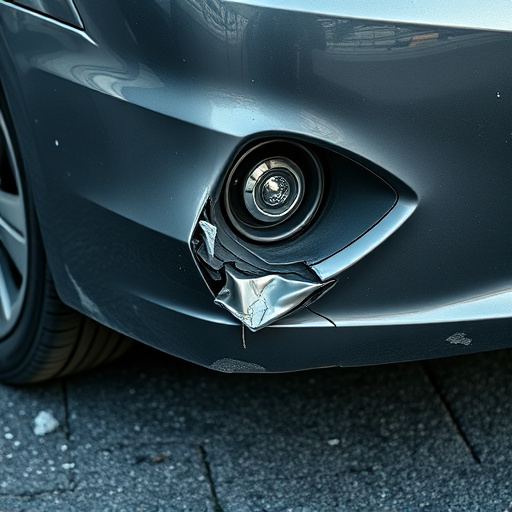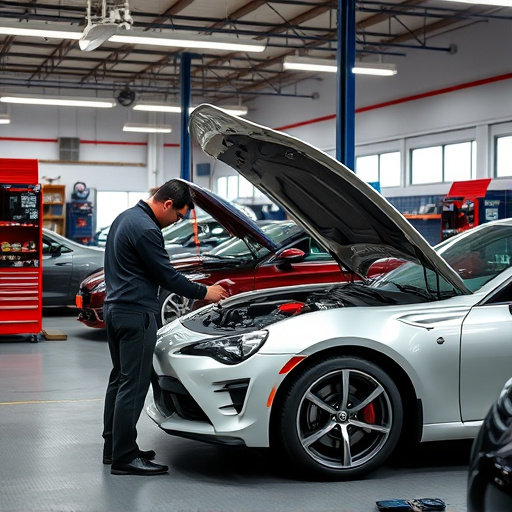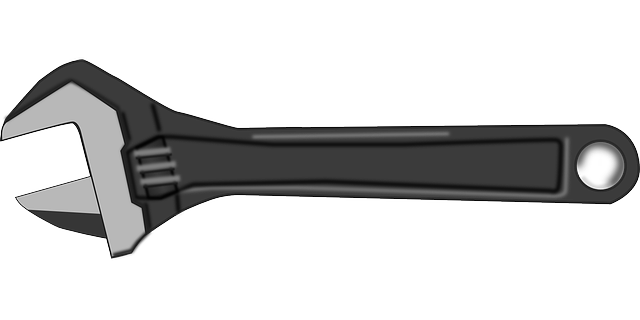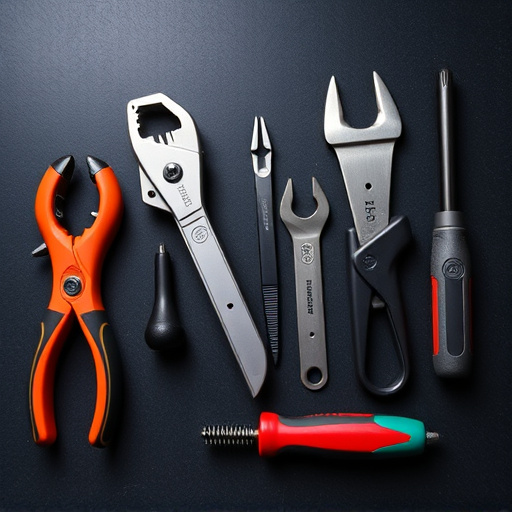Mercedes' advanced headlight control modules integrate data from sensors to adapt aim and intensity based on driving conditions, enhancing safety and visibility. When replacing or repairing these modules during services like tire changes or paint jobs, certified technicians are crucial for optimal performance, safety, and legal compliance. Headlight adjustment after module replacement is essential for maximum alignment and visibility; skipping this can compromise night driving conditions. For complex Mercedes lighting systems or bodywork repairs, consulting a professional mechanic ensures legal standards and optimized visibility.
Mercedes vehicles are renowned for their advanced technology, including sophisticated headlight control modules. While these components ensure optimal lighting performance, replacing them without proper adjustment can lead to misaligned headlights. This article delves into the essential step of Mercedes headlight adjustment post-replacement, detailing the impact on lighting and safety. We provide a comprehensive guide to help owners correctly realign their headlights, ensuring a safe and efficient driving experience.
- Understanding Mercedes Headlight Control Modules
- The Impact of Replacing Control Modules on Headlight Alignment
- Adjusting Mercedes Headlights Post-Replacement: A Step-by-Step Guide
Understanding Mercedes Headlight Control Modules

Mercedes headlight control modules are sophisticated components that play a critical role in adjusting and optimizing your vehicle’s headlights. These modules work in tandem with sensors to monitor various parameters, such as vehicle speed, steering angle, and ambient light conditions. Based on this data, they precisely control the aim and intensity of the headlights, ensuring optimal visibility and safety. This intricate system is designed to adapt to different driving conditions, from urban streets to open highways.
When it comes to replacing control modules or undergoing tire services, car paint services, or fender repair, it’s essential to understand that these tasks require specialized knowledge and tools. Improper adjustments in the headlight control system can lead to suboptimal lighting performance, affecting both safety and legality. Therefore, it’s crucial to ensure that any replacement or repair is done by certified technicians who can accurately calibrate and reconfigure the system, upholding the high standards set by Mercedes.
The Impact of Replacing Control Modules on Headlight Alignment

When replacing control modules in a Mercedes vehicle, it’s crucial to understand that this process can significantly impact the alignment and positioning of the headlights. These control modules play a vital role in regulating various functions within the car, including lighting systems. As such, any changes or replacements require careful consideration to maintain optimal headlight performance.
After installing new control modules, a Mercedes headlight adjustment becomes essential. The adjustments ensure that each headlamp is correctly aligned, aiming in the right direction and providing the intended beam pattern for maximum visibility on the road. Skipping this step could result in poor lighting conditions, potentially compromising safety while driving at night. Thus, many car bodywork services recommend including a thorough Mercedes benz repair process to re-align headlights post any control module replacements.
Adjusting Mercedes Headlights Post-Replacement: A Step-by-Step Guide

After replacing control modules in a Mercedes, getting the headlights adjusted perfectly is crucial for both safety and aesthetic reasons. This process involves a series of steps to ensure the headlights are aligned correctly, casting the optimal beam pattern on the road ahead. Begin by ensuring your vehicle is parked in a well-lit area with adequate space around it, as you’ll be working with precise adjustments. Next, locate the headlight control unit, typically found near the engine bay or under the vehicle’s hood. Using the appropriate tools, such as torque wrenches and alignment gauges, proceed to make incremental adjustments to the headlight assembly.
Start by checking the headlight aim, ensuring both headlights are parallel to each other and correctly aimed at the road surface. Then, verify the light distribution—the beam pattern should be even without any dark or bright spots. If adjustments are needed for your vehicle’s bodywork or car body repair, consider consulting a professional mechanic who can handle intricate repairs, especially if your Mercedes model has complex lighting systems. Remember, accurate headlight adjustment not only enhances visibility but also ensures your vehicle meets legal standards for lighting systems.
After replacing Mercedes headlights’ control modules, proper alignment is crucial for optimal lighting performance and safety. This process, known as Mercedes headlight adjustment, ensures your vehicle’s headlights shine accurately, enhancing visibility on the road. By following the step-by-step guide provided, you can achieve precise headlight alignment, ensuring a safer and more enjoyable driving experience.












